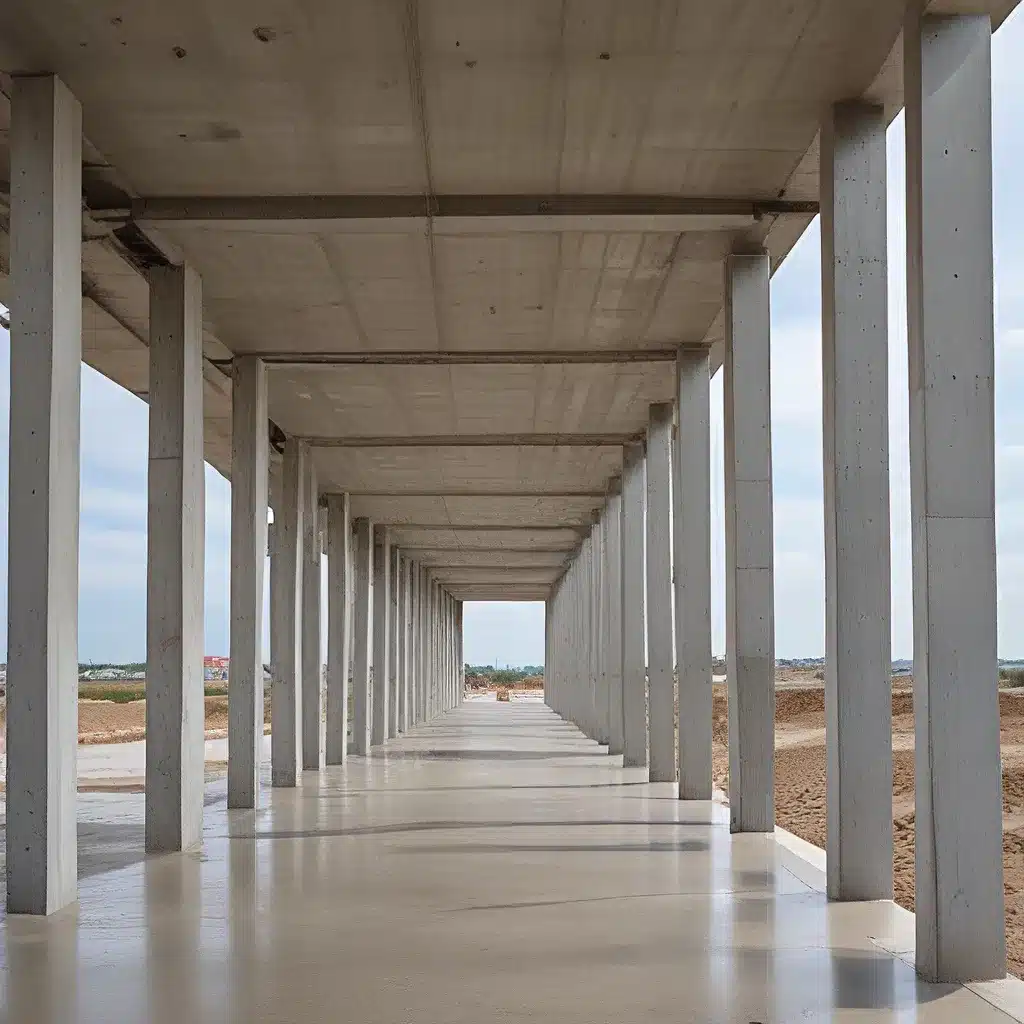
Battling the Elements: The Rise of Resilient Construction
When the winds howl, the waters rise, and the earth trembles, our buildings need to stand firm. Gone are the days of flimsy structures, destined to crumble at the first sign of nature’s fury. Welcome to the era of resilient construction – where we’re building structures that can weather any storm, quake, or wildfire.
As a project manager for a concrete services and solutions company, I’ve seen firsthand the growing need for resilient infrastructure. In the face of worsening natural disasters, we can no longer afford to cut corners or rely on outdated construction methods. The future of our buildings is all about strength, durability, and the ability to bounce back from the unthinkable.
The Resilience Revolution
The resilience revolution has been brewing for some time, gaining momentum after devastating events like Hurricane Katrina and the Tohoku earthquake. These catastrophes exposed the vulnerabilities in our existing infrastructure, prompting a global call to action.
Governments, policymakers, and industry stakeholders have since embarked on a journey to redefine the standards for essential infrastructure. The United Nations has played a pivotal role, outlining strategic goals and priorities for reducing disaster risk and enhancing resilience, with a particular focus on vulnerable communities.
But resilience isn’t just about surviving the next big disaster – it’s also about sustainability and adaptability. By integrating resilient design principles into our construction projects, we can create buildings that not only withstand the elements but also evolve with changing needs and conditions.
Innovation: The Cornerstone of Resilience
At the heart of this resilience revolution is innovation. Commercial general contracting companies like ours are at the forefront, embracing cutting-edge technologies to enhance the resilience of infrastructure projects.
One such innovation is Building Information Modeling (BIM), which enables us to create digital representations of a building’s physical and functional characteristics. This allows for multidisciplinary collaboration and visualization throughout the project lifecycle, helping us identify potential issues and optimize the layout of structural elements.
Another game-changer is the development of advanced materials, such as fiber-reinforced polymers, high-strength steel, and insulated concrete panels. These materials offer superior strength, durability, and resilience compared to traditional building materials, allowing us to construct structures that can withstand a wide range of environmental stressors.
But the innovation doesn’t stop there. We’re also harnessing the power of smart technologies and the Internet of Things (IoT). Sensors embedded within our buildings can monitor structural integrity, environmental conditions, and energy consumption in real-time, providing valuable insights into performance and potential risks.
And let’s not forget about the role of drones and robotics. These technological marvels enable us to conduct aerial surveys, site inspections, and progress monitoring with unprecedented speed, accuracy, and safety. They’re revolutionizing construction processes, from automated bricklaying to autonomous equipment operation, enhancing productivity and efficiency while reducing the reliance on human labor in hazardous environments.
Regulatory Frameworks: Ensuring Resilience
As the resilience revolution gains momentum, governments worldwide are enacting stringent regulations and building codes to mitigate risks and ensure the resilience of infrastructure projects. This places commercial general contracting companies like ours at the forefront of compliance and implementation.
From earthquake-prone regions mandating seismic retrofitting measures to flood-prone areas requiring elevated foundations and stormwater management systems, we must stay abreast of these evolving regulations to safeguard public safety and minimize liability.
But it’s not just local regulations – international bodies like the International Code Council (ICC) and the United Nations Office for Disaster Reduction (UNDRR) are also developing standardized guidelines and best practices for resilient construction. These standards cover a wide range of factors, including seismic resilience, energy efficiency, and environmental sustainability.
To stay ahead of the curve, we’ve embraced certification and accreditation programs like LEED (Leadership in Energy and Environmental Design) and Envision, which provide frameworks for assessing and recognizing the resilience and sustainability of our projects. These programs drive industry-wide adoption of best practices, ensuring that we’re always at the forefront of resilient construction.
Resilience in Commercial Real Estate
The importance of resilience extends far beyond the construction site – it’s a paramount consideration for investors, developers, and tenants in the commercial real estate industry.
Buildings that are resilient to natural disasters, climate change, and other disruptions not only safeguard occupants but also preserve asset value and ensure business continuity. According to a report by the Urban Land Institute (ULI), properties with resilient features command higher rental rates, lower insurance premiums, and greater market appeal.
For example, commercial office buildings equipped with backup power systems and robust communication networks are better equipped to withstand power outages and maintain productivity during emergencies. Similarly, retail centers with resilient design features, such as flood-resistant building materials and elevated storefronts, are less susceptible to damage from extreme weather events, reducing downtime and revenue losses for tenants.
The Path Forward: Embracing Resilience
As stewards of the built environment, commercial general contracting companies like ours have a profound responsibility to prioritize resilience in every aspect of our work. By embracing innovation, adhering to regulations, integrating resilient design features, and applying these principles to commercial real estate, we can pave the way for a more resilient future.
At Concrete RTownsville, we’ve made resilience a cornerstone of our operations. From our expertise in concrete tilt-up construction, known for its significant strength and resilience, to our ongoing commitment to cutting-edge technologies and sustainable practices, we’re dedicated to constructing buildings that can withstand the test of time.
In an era defined by uncertainty and volatility, the resilience of our infrastructure will determine our ability to thrive in the decades to come. As we embark on this journey, we must embrace a steadfast commitment to resilience, ensuring that the buildings we construct not only stand strong against the elements but also serve as beacons of strength and stability in an ever-changing world.

